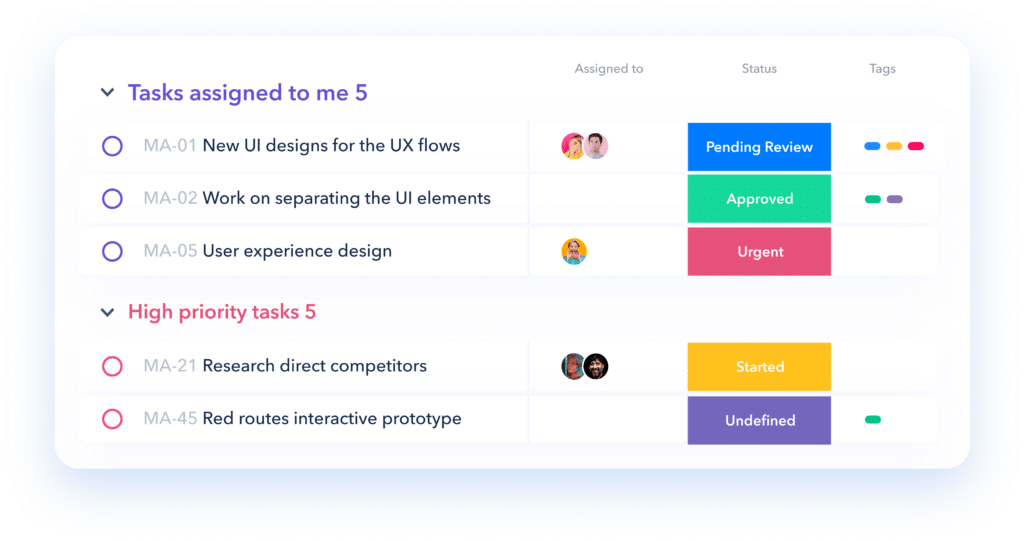The World Health Organization has recognized workplace burnout as a medical diagnosis. According to the organization, it’s a syndrome from chronic workplace stress, which unfortunately hasn’t been managed well. That alone should encourage businesses to focus on how to reduce burnout.
Team burnout can negatively impact an organization’s performance on multiple levels. These effects may not be visible at first sight. Some managers who spot it may even attribute it to a lack of commitment. But far too often, team burnout is the real cause and that’s why there should be a greater effort to reduce burnout.
Defining employee burnout
To reduce team burnout, the first step is to understand its symptoms. While it can take multiple forms, it usually results in these three situations:
- Employees feel exhausted and depleted of energy
- They feel distanced from their jobs or are cynical about work
- There is a notable decrease in professional effectiveness
Why you should reduce burnout
It reduces productivity. An employee isn’t just a resource. Employees who experience burnout are less productive and engaged, which will ultimately affect the organization’s performance, revenue, and profits. To increase productivity, they should be seen as capital that requires the right investment.
It ruins the office environment. Burnout creates toxic atmospheres. In workplaces where people feel disengaged and fatigued, there will be unnecessary friction points within teams and between domains. It would be difficult to get individuals to collaborate because they aren’t committed to the larger vision.
It kills innovation. Overworked and tired employees won’t be innovative. They wouldn’t have either the time or energy to come up with fresh ways of dealing with problems. This results in fewer breakthrough solutions and less cash flow and perpetuates the cycle of disengagement.
It increases turnover. If organizations turn a blind eye toward team burnout, even top performers would leave the system for healthier workplaces. Since it’s easy for employees to review their organizations online, this also makes it difficult to attract talent.

#image_title
13 ways to reduce burnout
These are some of the most effective ways in which you can reduce team burnout.
1. Create a flexible work model
In a digitalized world, there’s no need to stick to outdated work models. Employees appreciate organizations that offer remote and hybrid opportunities. If it’s possible for your business to offer any of these models, it will help reduce burnout.
Remember that several factors that affect team burnout such as travel and needless in-person meetings can be avoided with remote or hybrid work. This also gives you access to top talent from around the world
2. Provide flexible work schedules
Different individuals perform best under different schedules. Don’t expect everyone to stick to an arbitrary timetable. If some individuals are at their best at a particular time of the day, it’s the duty of the manager to encourage that.
Flexibility in work schedules should start at the team level because managers would have a better understanding of how their team members work and can tailor tasks and deadlines accordingly.
3. Make work-life balance a corporate policy
The most important thing that an organization can do to reduce burnout is to prioritize work-life balance as a company mission. Along with all other metrics, there should be both leadership buy-in and substantial investments on this front.
When it’s a company objective, there will be transparent frameworks to avoid overworking employees and giving them sufficient breaks. Human resource teams can then have protocols to look out for early signs of employee burnout and take remedial measures.
4. Encourage employees to take vacations
Vacation days are disappearing for employees. This isn’t because companies aren’t providing sufficient vacation. Increasingly, employees are forgoing their vacation time due to job security fears. A taxing work environment is the real culprit here.
There’s an urgent need for companies to frame vacation policies and incentivize employees to utilize their time off. One option could be to track the vacation hours of employees to ensure that they don’t end up working excess hours.

5. Encourage short breaks
There’s a limit to which an individual can steadfastly focus on a task. Without breaks, employees will lose their concentration and feel exhausted. The solution is to promote short breaks.
To be effective, managers should ask their employees whether they need a break or not. A short coffee break, a walk around the premises, or casual conversations away from their screens can reduce stress.
6. Set clear goals
Setting goals is important for team motivation and productivity. But it’s equally important to set clear objectives if you want to reduce team burnout. When there’s confusion regarding expectations, employees will end up wasting time on unnecessary activities which will tire them.
Transparently laying out goals will also avoid scope creep where the deliverables of the project keep expanding. Along with giving goals in writing, it’s important to have direct conversations and even training videos to help employees stick to the project requirements.
7. Focus on fair staffing
One of the most common reasons for team burnout is an understaffed workforce. While this might seem obvious, it’s surprising how many businesses overlook fair staffing requirements and instead opt for ad hoc solutions.
To encourage employees to deliver their best, they shouldn’t be overburdened. With an appropriate metric for recruitment, companies can get the right individual for the right domain. Similarly, it’s important to assign tasks according to employees’ proficiencies and existing workloads.
8. Give fair compensation
Few organizations want to accept it but low salaries are an important factor in employee burnout. With increasing workloads and complex projects, it’s only fair that people expect to be given fair compensation. This is especially true when employees can find salaries for similar jobs in other companies.
Fair and competitive remuneration will not just increase employee engagement and reduce burnout but it will also raise the disposable income that employees have for leisure activities. This will immensely help in improving their overall life satisfaction.
9. Offer perks and overtime
Compensation usually stays fixed while workloads vary. This creates a gap between employee efforts and rewards. The bigger it becomes, the more chances that there will be team burnout in the system. The solution is to offer timely perks and adequate overtime.
Perks need not be monetary in nature. It can be added vacation time or public appreciation of their efforts. It could also be something for the employee’s family in the form of shopping discounts.
10. Encourage employees to prioritize tasks
Far too often, employees are saddled with too many tasks and responsibilities. When everything seems equally important, employees end up being fatigued. But as every efficient manager knows, not all tasks have the same priority.
When delegating tasks, clearly convey their priorities. Remember that as per the Pareto principle, 80% of results will come from around 20% of the tasks. Focusing on these will tremendously increase productivity and prevent team burnout.
11. Give greater autonomy to employees
The scourge of micromanaging is one of the biggest factors that lead to employee burnout. Managers interrupting them and giving directions on each aspect of the task makes employees feel disempowered. It also conveys to them that the organization doesn’t trust them.
Once you assign tasks, trust your team members to execute them. Whenever they need additional information, you can use a dedicated digital tool such as Heycollab. This also ensures that they have access to necessary resources without having to contact the project lead every time.

12. Get regular feedback
The ability to give feedback tells employees that the system respects their input. What’s key here is not to have a regimented process where employees can only give feedback once a year or quarter. For feedback to be effective, it needs to be regular.
Frequent feedback will allow employees to share their concerns on existing projects. Whether they feel overburdened or misaligned with the technical requirements, such feedback empowers managers to make timely changes and reduce burnout.
13. Organize casual get-togethers
Employees need get-togethers to relax and know each other outside of their professional environments. Organizations also know its importance but such activities can quickly become team-building sessions that only benefit the organization. These formulaic activities are supposed to increase collaboration and communication but end up being off-putting chores.
What companies need are casual meetups without the strict supervision of human resource managers. The more rules you add, the more disengaged they will be. Importantly, they will be seen as an extension of the office atmosphere. Whether it’s a brunch, game, or a visit to a theme park, these get-togethers should primarily enable employees to be themselves. There should also be organizational support for such get-togethers.
To reduce burnout, companies should focus on efficient and seamless communication. Heycollab is a project management tool built for teams like yours. With a free 14-day trial, you can try out all the cool features. To get started, visit https://heycollab.com/

